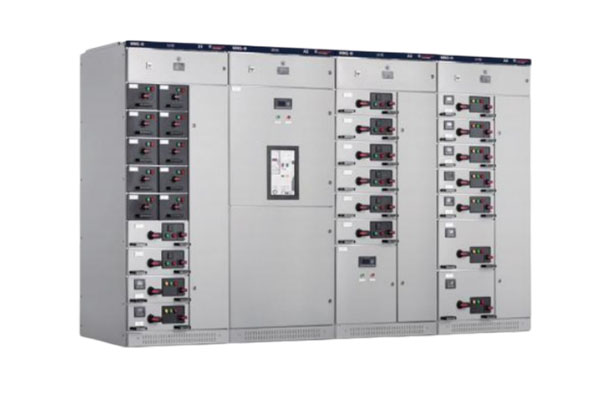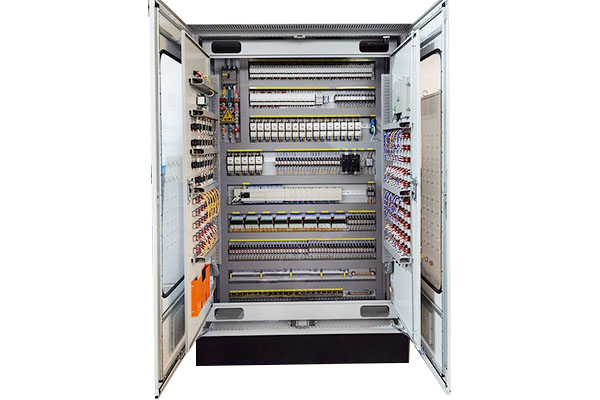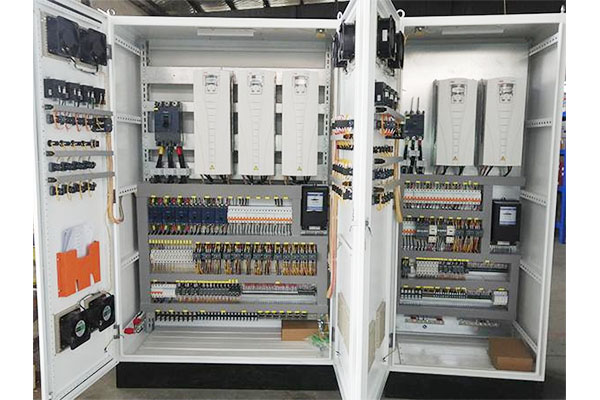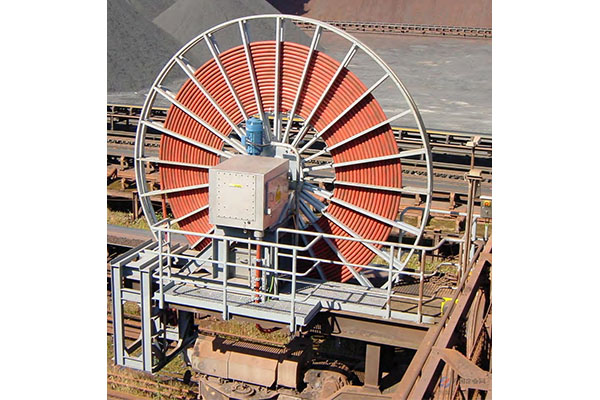How to ensure stable operation of equipment in inverter servo drive cabinet?
Release Time : 2025-01-29
In inverter servo drive cabinet, stable operation of equipment is the key to ensure efficient and reliable operation of the system. In order to ensure stable operation of equipment, comprehensive consideration is required from multiple aspects such as hardware design, software control, environmental conditions, maintenance and so on.
1. Hardware design
High-quality components: Key components in inverter servo drive cabinet, such as inverter, servo drive, power module, heat sink, controller, etc., should be selected with high quality and high reliability. The quality of components directly affects the stability and life of the system.
Modular design: The use of modular design can improve the reliability and maintainability of the system. When a module fails, it can be quickly replaced to reduce downtime.
Anti-interference design: The variable frequency servo system will generate electromagnetic interference (EMI) when working, which will affect the stable operation of the system. Therefore, the design of the drive cabinet should include shielding measures (such as metal casing), filters, grounding systems, etc. to reduce electromagnetic interference.
Heat dissipation design: The inverter and servo drive will generate a lot of heat when working. If the heat dissipation is poor, it will cause the equipment to overheat, affect the performance or even damage the equipment. The drive cabinet should be designed with a good heat dissipation system, such as fans, heat sinks, air ducts, etc., to ensure that the equipment works within a suitable temperature range.
2. Software control
Accurate control algorithm: The control accuracy of the servo system directly affects the operating stability of the equipment. The inverter servo drive cabinet should adopt advanced control algorithms, such as PID control, fuzzy control, adaptive control, etc., to ensure that the motor can respond to load changes quickly and accurately and maintain the stability of the system.
Overload protection function: The software should have an overload protection function to prevent the motor and drive from being damaged under overload conditions. By real-time monitoring of parameters such as current, voltage, and torque, the system can automatically adjust the output or shut down for protection when an overload is detected.
Dynamic load compensation: In the case of large load changes, the system should have a dynamic load compensation function to ensure that the motor can maintain a constant speed and torque output under different load conditions.
Automatic fault diagnosis and alarm: The inverter servo drive cabinet should have an automatic fault diagnosis function that can monitor the operating status of the system in real time, detect faults in time, and send out alarm signals. This helps to quickly locate problems and reduce downtime. Including detection and protection of abnormal conditions such as overvoltage, undervoltage, overcurrent, and overheating.
3. Power management
Stable power input: The power input of the inverter servo drive cabinet should have sufficient stability. Power fluctuations or unstable voltage will directly affect the performance of the servo system. Therefore, the drive cabinet should be equipped with a voltage stabilizer, uninterruptible power supply (UPS) or power filter to ensure the stability and reliability of the power input.
Power redundancy design: In critical applications, the power system can adopt a redundant design to prevent single-point failures from causing system downtime. For example, use dual power input or a backup power system.
4. Environmental conditions
Temperature control: The operating environment temperature of the drive cabinet should be kept within the range allowed by the equipment. Too high or too low temperatures will affect the performance and life of the equipment. Therefore, the drive cabinet should be installed in a well-ventilated and temperature-appropriate place, and equipped with air conditioning or heating equipment if necessary.
Humidity control: A high humidity environment may cause electrical components to get damp, causing short circuits or corrosion problems. The drive cabinet should be installed in an environment with suitable humidity, and a dehumidifier should be used if necessary.
Dust and corrosion prevention measures: In an environment with a lot of dust or corrosive gases, the drive cabinet should take dust and corrosion prevention measures, such as sealed housings, filters, etc., to ensure that the internal components are not contaminated by the outside world.
5. Maintenance and care
Regular inspection and maintenance: Regularly inspect and maintain the inverter servo drive cabinet to ensure the normal operation of each component. Including checking whether the wiring is loose, whether the cooling system is working properly, whether the electrical components have signs of aging, etc.
Lubrication and cleaning: For mechanical parts, such as servo motors and transmission mechanisms, lubrication and cleaning should be carried out regularly to prevent mechanical wear and jamming.
Software update and optimization: With the advancement of technology, servo control software may be continuously updated. Regular software updates can optimize system performance, improve stability and response speed.
6. Earthquake resistance and protection design
Earthquake resistance design: In earthquake-prone areas, the drive cabinet should have good earthquake resistance to prevent equipment damage or falling due to earthquakes. Through reasonable structural design and fixing methods, ensure that the drive cabinet can remain stable during an earthquake.
Protection level: Depending on the use environment, the drive cabinet should have a corresponding protection level (such as IP protection level) to prevent dust, moisture, corrosive gases, etc. from invading the equipment.
7. Real-time monitoring and remote management
Real-time monitoring system: The inverter servo drive cabinet should be equipped with a real-time monitoring system that can monitor key parameters such as current, voltage, temperature, speed, and position in real time. Through data collection and analysis, potential problems can be discovered in time to avoid equipment failure.
Remote management function: For some large or distributed systems, the inverter servo drive cabinet should have a remote management function that allows the equipment to be monitored and operated through the network. This not only improves the management efficiency of the system, but also allows for a quick response when a fault occurs.
In order to ensure the stable operation of the inverter servo drive cabinet, it is necessary to comprehensively consider multiple aspects such as hardware design, software control, power management, environmental conditions, and maintenance. High-quality components, reasonable heat dissipation design, stable power input, precise control algorithms, and timely maintenance and monitoring are all key factors to ensure the stable operation of the system. By comprehensively applying these measures, the reliability and service life of the inverter servo drive cabinet can be effectively improved, ensuring that the equipment can work efficiently and stably under various working conditions.
1. Hardware design
High-quality components: Key components in inverter servo drive cabinet, such as inverter, servo drive, power module, heat sink, controller, etc., should be selected with high quality and high reliability. The quality of components directly affects the stability and life of the system.
Modular design: The use of modular design can improve the reliability and maintainability of the system. When a module fails, it can be quickly replaced to reduce downtime.
Anti-interference design: The variable frequency servo system will generate electromagnetic interference (EMI) when working, which will affect the stable operation of the system. Therefore, the design of the drive cabinet should include shielding measures (such as metal casing), filters, grounding systems, etc. to reduce electromagnetic interference.
Heat dissipation design: The inverter and servo drive will generate a lot of heat when working. If the heat dissipation is poor, it will cause the equipment to overheat, affect the performance or even damage the equipment. The drive cabinet should be designed with a good heat dissipation system, such as fans, heat sinks, air ducts, etc., to ensure that the equipment works within a suitable temperature range.
2. Software control
Accurate control algorithm: The control accuracy of the servo system directly affects the operating stability of the equipment. The inverter servo drive cabinet should adopt advanced control algorithms, such as PID control, fuzzy control, adaptive control, etc., to ensure that the motor can respond to load changes quickly and accurately and maintain the stability of the system.
Overload protection function: The software should have an overload protection function to prevent the motor and drive from being damaged under overload conditions. By real-time monitoring of parameters such as current, voltage, and torque, the system can automatically adjust the output or shut down for protection when an overload is detected.
Dynamic load compensation: In the case of large load changes, the system should have a dynamic load compensation function to ensure that the motor can maintain a constant speed and torque output under different load conditions.
Automatic fault diagnosis and alarm: The inverter servo drive cabinet should have an automatic fault diagnosis function that can monitor the operating status of the system in real time, detect faults in time, and send out alarm signals. This helps to quickly locate problems and reduce downtime. Including detection and protection of abnormal conditions such as overvoltage, undervoltage, overcurrent, and overheating.
3. Power management
Stable power input: The power input of the inverter servo drive cabinet should have sufficient stability. Power fluctuations or unstable voltage will directly affect the performance of the servo system. Therefore, the drive cabinet should be equipped with a voltage stabilizer, uninterruptible power supply (UPS) or power filter to ensure the stability and reliability of the power input.
Power redundancy design: In critical applications, the power system can adopt a redundant design to prevent single-point failures from causing system downtime. For example, use dual power input or a backup power system.
4. Environmental conditions
Temperature control: The operating environment temperature of the drive cabinet should be kept within the range allowed by the equipment. Too high or too low temperatures will affect the performance and life of the equipment. Therefore, the drive cabinet should be installed in a well-ventilated and temperature-appropriate place, and equipped with air conditioning or heating equipment if necessary.
Humidity control: A high humidity environment may cause electrical components to get damp, causing short circuits or corrosion problems. The drive cabinet should be installed in an environment with suitable humidity, and a dehumidifier should be used if necessary.
Dust and corrosion prevention measures: In an environment with a lot of dust or corrosive gases, the drive cabinet should take dust and corrosion prevention measures, such as sealed housings, filters, etc., to ensure that the internal components are not contaminated by the outside world.
5. Maintenance and care
Regular inspection and maintenance: Regularly inspect and maintain the inverter servo drive cabinet to ensure the normal operation of each component. Including checking whether the wiring is loose, whether the cooling system is working properly, whether the electrical components have signs of aging, etc.
Lubrication and cleaning: For mechanical parts, such as servo motors and transmission mechanisms, lubrication and cleaning should be carried out regularly to prevent mechanical wear and jamming.
Software update and optimization: With the advancement of technology, servo control software may be continuously updated. Regular software updates can optimize system performance, improve stability and response speed.
6. Earthquake resistance and protection design
Earthquake resistance design: In earthquake-prone areas, the drive cabinet should have good earthquake resistance to prevent equipment damage or falling due to earthquakes. Through reasonable structural design and fixing methods, ensure that the drive cabinet can remain stable during an earthquake.
Protection level: Depending on the use environment, the drive cabinet should have a corresponding protection level (such as IP protection level) to prevent dust, moisture, corrosive gases, etc. from invading the equipment.
7. Real-time monitoring and remote management
Real-time monitoring system: The inverter servo drive cabinet should be equipped with a real-time monitoring system that can monitor key parameters such as current, voltage, temperature, speed, and position in real time. Through data collection and analysis, potential problems can be discovered in time to avoid equipment failure.
Remote management function: For some large or distributed systems, the inverter servo drive cabinet should have a remote management function that allows the equipment to be monitored and operated through the network. This not only improves the management efficiency of the system, but also allows for a quick response when a fault occurs.
In order to ensure the stable operation of the inverter servo drive cabinet, it is necessary to comprehensively consider multiple aspects such as hardware design, software control, power management, environmental conditions, and maintenance. High-quality components, reasonable heat dissipation design, stable power input, precise control algorithms, and timely maintenance and monitoring are all key factors to ensure the stable operation of the system. By comprehensively applying these measures, the reliability and service life of the inverter servo drive cabinet can be effectively improved, ensuring that the equipment can work efficiently and stably under various working conditions.







